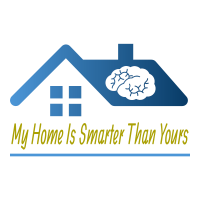A smart home is only as smart as the information that it has access to.
A modern car has so many sensors installed that, as long as you have the correct tool, the car can tell you what is wrong and how to fix the problem! You’ve seen them, tire pressure sensors, seat belt sensors, gas tank sensors (to tell you how much gas is left in the tank), door open sensors, oil pressure sensors, temperature sensors and on and on and on. Those are just the ones that you can see! There are hundreds of sensors throughout the various systems of a car today. All of these sensors are talking to a central computer that can put the car in “limp” mode to limit major damage but still get you home or at the very least a safe place or a mechanic.
A smart home uses sensors in the same way. Many homes come with basic sensors that are installed with an alarm system. These include door and window sensors, motion detection, glass break and even smoke detection sensors. The more sensors you put in your home, the smarter your home can be. Alarms that are pre-installed in homes use perimeter sensors, they detect when the doors or windows around the exterior of your home are open or closed with the purpose of alerting you to an intruder. Motion detectors are used when an alarm is in the “armed” state to alert you to motion in your home when you don’t expect there to be any motion. Smoke detectors are used to detect the likelihood of a fire.
Now, let’s tweak our thinking just slightly and imagine these sensors working in a smart home system providing constant information to your home’s “brain”. A smart home can:
- Use an occupancy sensor (motion detector) in your home to turn on a light and fan in a room when the alarm is disarmed and still sound the alarm if the alarm is armed.
- React to you turning on your smart bedside lamp in the middle of the night by lighting a path to the bathroom or kitchen and turn all the lights back off when the lamp is turned back off.
- Display your driveway camera on your TV’s picture-in-picture when a car drives up and the driveway sensor is activated.
- Turn off the main water valve if a flood sensor is triggered in the bathroom, kitchen or utility room.
- Turn off the air conditioner and all fans, then turn on lights of emergency exit paths when a smoke alarm is triggered.
- Turn off the air conditioner and turn on ceiling fans when a window is opened or a door is left open too long.
A home is not smart simply because you have devices that you can control. A home truly becomes smart when sensors are used intelligently to allow the home to perform tasks that are either convenient, save money or enhance safety.
Do you have a scenario you would like help in designing? Comment below or send us an email at info@myhomeissmarter.net. We would love to help out!


No responses yet